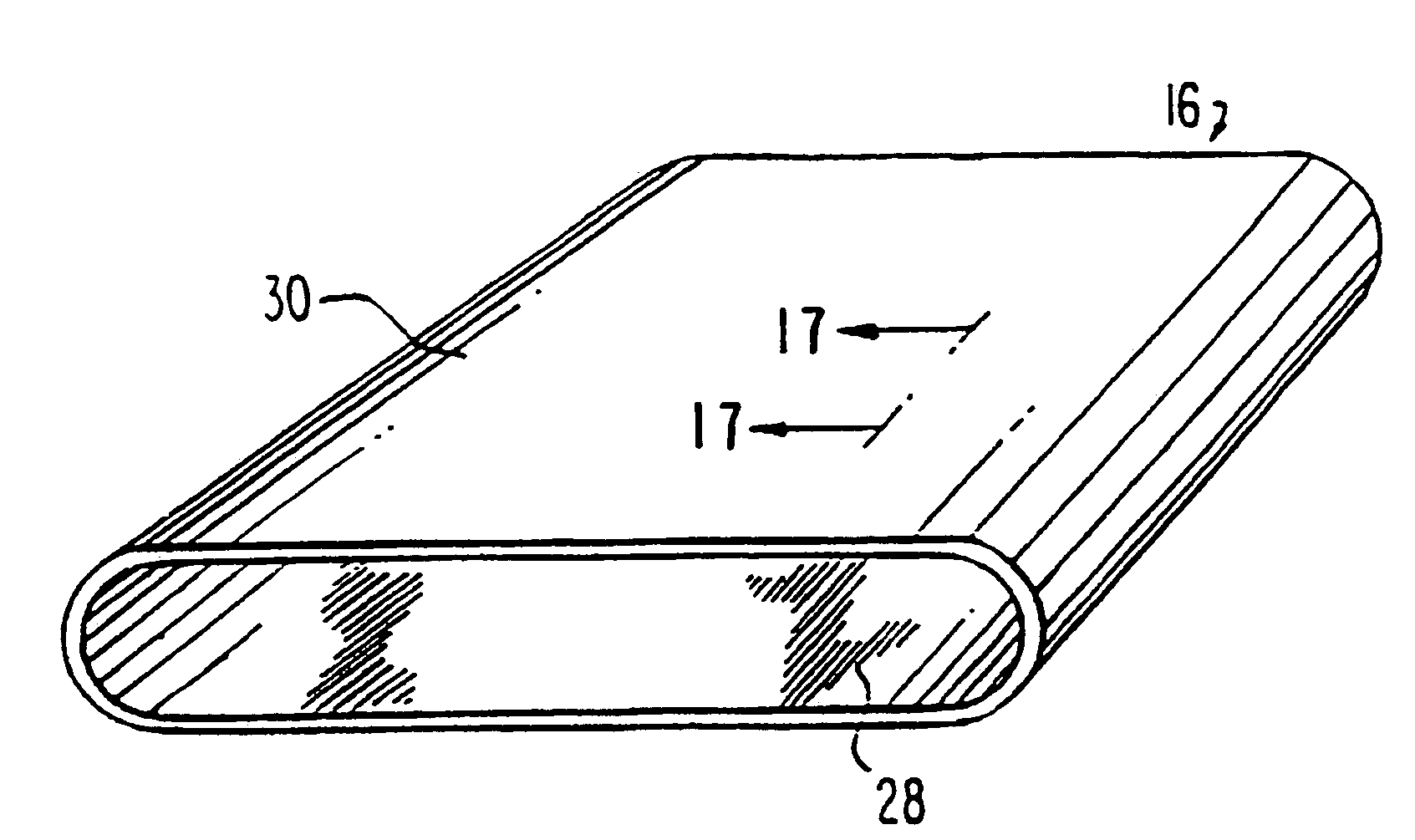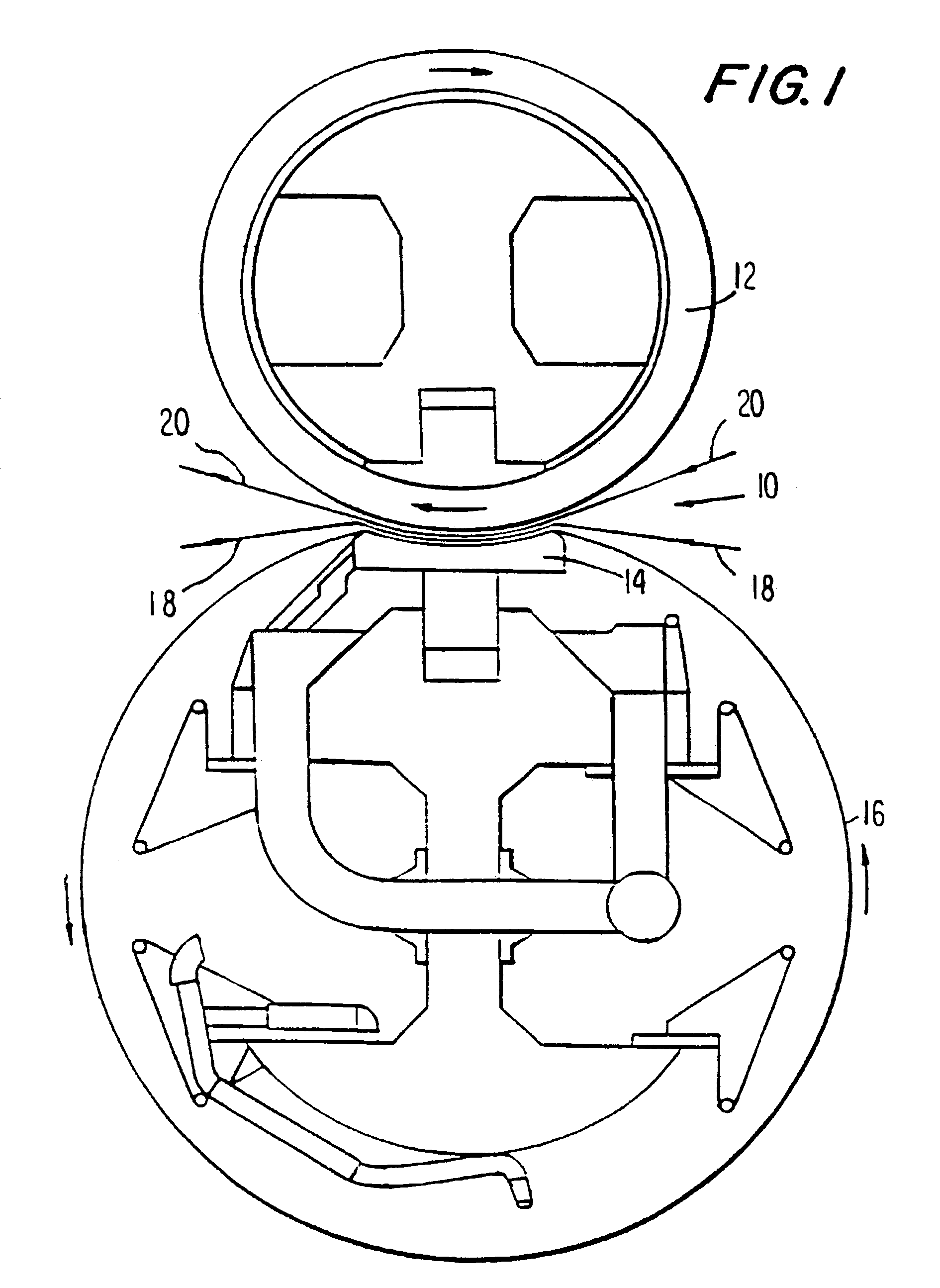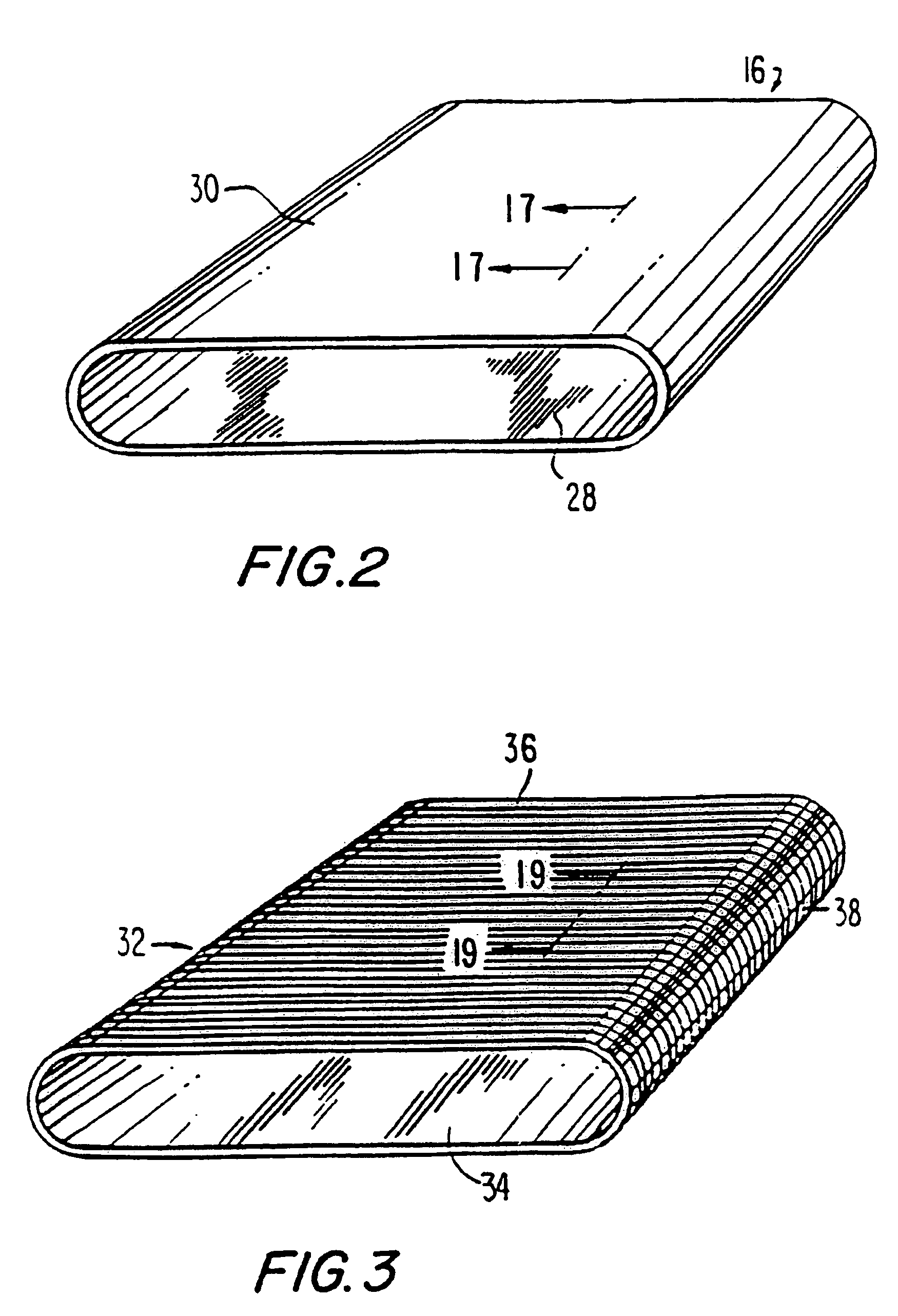Belts and roll coverings having a nanocomposite coating
a nano-composite coating and belt technology, applied in the field of papermaking arts, can solve the problems of belt cracking, belt flex fatigue, and other belts used for transferring paper webs in the papermaking process, and achieve the effects of improving flex fatigue, crack propagation, and wear characteristics
- Summary
- Abstract
- Description
- Claims
- Application Information
AI Technical Summary
Benefits of technology
Problems solved by technology
Method used
Image
Examples
example 1
[0082]A test sample of an elastomeric polyurethane / clay nanocomposites based on poly(propylene glycol), glycerol propoxylated and toluene-diisocyanate are synthesized by an intercalative polymerization technology. Introducing approximately 7.5% by weight clay nanoparticles into the composite results in more than a two-fold increase in the tensile strength of the resin composite and a five-fold increase in the elongation “at break” as compared to a sample of pure polyurethane.
example 2
[0083]A test sample of polyurethane nanocomposite based on poly(tetramethylene glycol), MDI and 1,4-butanediol is synthesized. At only 1% montmorillonite nanoparticle concentration, there results a two-fold increase in tensile strength and a three-fold increase in the elongation of the polyurethane nanocomposites compared to a sample of pure polyurethane.
example 3
[0084]A sample of a unmodified polyurethane resin system used as a conventional polyurethane system was made from a polyether MDI prepolymer. The curative was a blend of conventional chain extenders selected from the class of aromatic amines and diols. The blend composition was selected in such a way to give adequate working life (“potlife”) and hardness when mixing in a conventional benchtop laboratory mixer. The curative blend was mixed with the nanoparticles prior to mixing with the prepolymer. The method described herein was also used in Example 4.
[0085]Nano-alumina particles (average particle size 37 nm) were supplied by Nanophase. Zinc Oxide particles (average particle size 36 nm) were also supplied by Nanophase. The supplier also supplied these particles pretreated. “Epoxy silane” treated means that the particle was pretreated with (3-glycidoxypropyl)trimethoxysilane. “Octyl silane” means that the particle was treated with n-octyltriethoxysilane. Cloisite 20A, Cloisite 30B an...
PUM
| Property | Measurement | Unit |
|---|---|---|
| size | aaaaa | aaaaa |
| size | aaaaa | aaaaa |
| size distribution | aaaaa | aaaaa |
Abstract
Description
Claims
Application Information
 Login to View More
Login to View More - R&D
- Intellectual Property
- Life Sciences
- Materials
- Tech Scout
- Unparalleled Data Quality
- Higher Quality Content
- 60% Fewer Hallucinations
Browse by: Latest US Patents, China's latest patents, Technical Efficacy Thesaurus, Application Domain, Technology Topic, Popular Technical Reports.
© 2025 PatSnap. All rights reserved.Legal|Privacy policy|Modern Slavery Act Transparency Statement|Sitemap|About US| Contact US: help@patsnap.com



